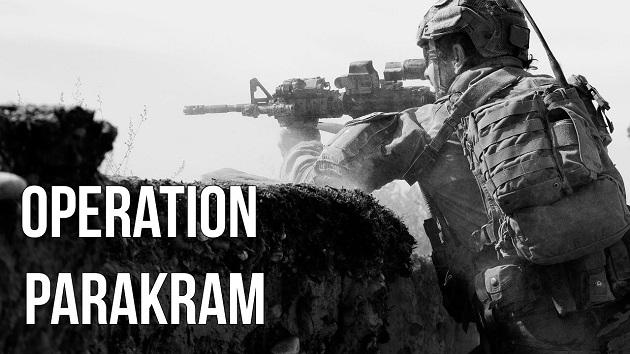Table of Contents
BACKGROUND
- On the morning of 13 December 2001, a cell of five armed men attacked the Indian Parliament by breaching the security cordon at Gate 12. The five men killed seven people before being shot dead by Indian Security Forces.
- On 14 December, the ruling Indian National Democratic Alliance blamed Pakistan-based Lashkar-e-Taiba (LeT) and Jaish-e-Mohammed (JeM) for the attack
- On 20 December, amid calls from the United States, Russia, and the United Nations to exercise restraint, India mobilised and deployed its troops to Kashmir and the Indian part of the Punjab in what was India’s largest military mobilization since the 1971 conflict.
- It would start with air strike by IAF’s Tiger Squadron to attack zones with large concentration of camps14 January 2002, was decided as the tentative D-day.
- Finance minister Yashwant Sinha announced that the Indian economy was prepared for a war, in spite of being the final option.
- In late December, both countries moved ballistic missiles closer to each other’s border, and mortar and artillery fire was reported in Kashmir.By January 2002, India had mobilized around 500,000 troops and Pakistan responded similarly, deploying around 300,000 troops to that region.
PEACE?
- The tensions were partially diffused after Musharraf’s speech on 12 January promising action on terror emanating from Pakistan.
- The Indian Prime Minister though skeptic of the seriousness of Musharraf’s pledges, decided not to carry out the military attack planned for January 14. “Hamein pratikar karna hoga “
- Tensions escalated significantly in May. On 14 May, three suicidal terrorists from Pakistan attacked an Army camp at Kaluchak near Jammu and killed 34 people and injured fifty more before getting killed.
- Most of the victims were the wives and children of Indian soldiers serving in Kashmir. The terrorist incident again revived the chance of a full blown war.
- On 15 May, PM Vajpayee was quoted in the Indian Parliament saying ( We will have to counter it).”
OPERATION
- On May 18, Vajpayee reviewed the preparedness with the Defence Minister Fernandez, Director-General Military Operations and Military Intelligence Chief.
- The battle canvas planned for June was larger than the one planned in January. The Indian Air Force along with 1 Strike Corps of Indian would initiate attack in Shakargarh bulge to engage Pakistan’s Army Reserve North (ARN) that was spread from Muzaffarabad to Lahore. The period considered was between 23 May and 10 June.
- During the end of May 2002, the Indian and Pakistani armed forces continued to be fully mobilized.
- On 21 May, clashes killed six Pakistani soldiers and 1 Indian soldier, as well as civilians from both sides. On 22 May, Indian Prime Minister Vajpayee announced to his troops to prepare for a “decisive battle”.
- Between May 25 and 28, Pakistan conducted 3 missile tests. India reviewed its nuclear capability to strike back. On 7 June the Pakistan Air Force shot down an Indian unmanned aerial vehicle near Lahore.
- As both India and Pakistan are armed with nuclear weapons, the possibility a conventional war could escalate into a nuclear one was raised several times during the standoff.
- On July 29, 2002 for the first time after the end of Kargil war India used air power to attack positions held by the Pakistani forces at Loonda Post on the Indian side of the Line of Control in the Machil sector.
- Pakistani army troops stationed near the post in Kupwara sector’s Kel area of the LOC had been shelling the Indian positions across the LOC.
- India suspected a troop build up situation near the border post that was similar to Kargil. Indian army planned a retaliation by sending troops to attack the Pakistani posts
AFTERMATH
- While tensions remained high throughout the next few months, both governments began easing the situation in Kashmir.
- By October 2002, India had begun to demobilize their troops along her border and later Pakistan did the same, and in November 2003 a cease-fire between the two nations was signed.

























 WhatsApp
WhatsApp